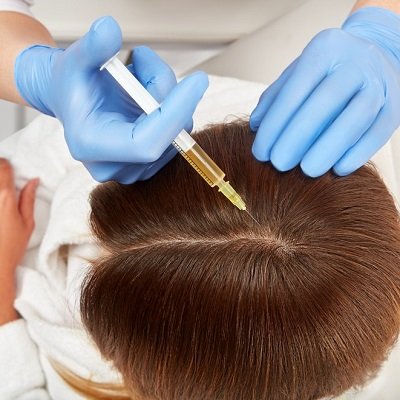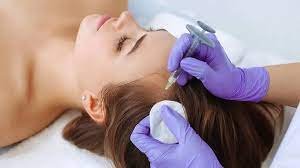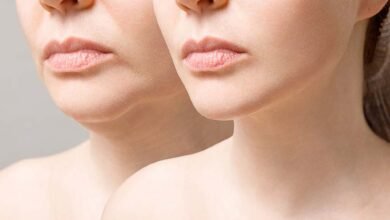
Platelet-Rich Plasma (PRP) therapy in Islamabad has emerged as a popular non-surgical treatment for hair loss, offering promising results for many patients. By using the body’s own platelets to stimulate hair follicle growth, PRP aims to reverse hair thinning and promote thicker, fuller hair. However, despite its growing popularity, PRP doesn’t work for everyone. In some cases, patients experience little to no improvement, leaving them wondering why the treatment failed. In this blog, we explore the common causes behind PRP treatment failure.
1. Advanced Hair Loss Stage:
One of the primary reasons PRP treatment may fail is the stage of hair loss when treatment begins. PRP is most effective in the early stages of hair thinning, where hair follicles are still active but weakened. For individuals experiencing advanced hair loss—where the follicles have completely died or scarring has occurred—PRP is less likely to be successful. PRP requires active follicles to work, and if the follicles have been dormant or damaged for too long, the treatment may not provide significant results.
Solution: Patients who seek treatment early when they first notice thinning are more likely to benefit from PRP. Timely intervention is crucial for better outcomes.
2. Improper Diagnosis of Hair Loss Cause:
PRP therapy is highly effective for certain types of hair loss, particularly androgenetic alopecia (male or female pattern baldness). However, it may not work as well for hair loss caused by other factors such as hormonal imbalances, autoimmune disorders, or nutritional deficiencies. For instance, alopecia areata, an autoimmune disorder, may require more specific treatments than PRP. Without properly diagnosing the underlying cause of hair loss, PRP treatment could result in disappointment.
Solution: A thorough diagnosis is essential before undergoing PRP therapy. This involves assessing the cause of hair loss and determining if PRP is the right option.
3. Lifestyle and Nutritional Deficiencies:
Hair growth requires proper nutrition and a healthy environment for the scalp. Patients with poor diets, high levels of stress, or unhealthy lifestyle habits like smoking or excessive alcohol consumption might not see the desired results from PRP therapy. Nutritional deficiencies, such as lack of iron, zinc, biotin, or Vitamin D, can also impede the effectiveness of PRP, as the body needs these nutrients for hair growth and repair.
Solution: Maintaining a balanced diet rich in vitamins and minerals, managing stress, and leading a healthy lifestyle can help maximize the benefits of PRP. Patients should consult with their healthcare provider to address any nutritional deficiencies before starting treatment.
4. Insufficient or Inconsistent Treatment Sessions:
PRP therapy requires multiple sessions to be effective, typically three to four initial treatments spaced one month apart, followed by maintenance sessions every few months. Patients expecting immediate results after just one session may feel PRP has failed if they don’t see visible changes right away. Similarly, those who do not follow up with maintenance treatments may notice a decline in results over time.
Solution: Consistency is key. PRP is a gradual process, and adhering to the full treatment plan, including follow-up sessions, is essential for sustained results.
5. Scalp Health and Conditions:
Certain scalp conditions, such as psoriasis, dermatitis, or severe dandruff, can hinder PRP’s effectiveness. These conditions cause inflammation or irritation, which may interfere with the absorption and efficacy of the platelet-rich plasma. Additionally, poor scalp circulation or a scalp that has been subjected to prolonged damage (from chemicals, sun exposure, or harsh styling practices) may respond poorly to PRP treatment.
Solution: Addressing any underlying scalp conditions and improving scalp health before PRP therapy can significantly enhance the treatment’s success. Proper scalp care, hydration, and avoiding chemical exposure are beneficial.
6. Patient’s Age and Genetics:
PRP results can be influenced by age and genetic predispositions. Older patients may not respond as well to PRP as younger individuals due to the natural decline in cell regeneration and hair follicle vitality that occurs with age. Additionally, individuals with a strong genetic predisposition to hair loss might experience more rapid thinning or balding, which can limit the effectiveness of PRP.
Solution: While age and genetics can’t be controlled, patients can combine PRP therapy with other treatments, such as medications like finasteride or minoxidil, to improve results. It’s important to manage expectations based on these factors.
7. Inexperience or Poor PRP Preparation:
The success of PRP therapy largely depends on the expertise of the practitioner and the quality of the PRP preparation. Not all PRP treatments are the same, as the concentration of platelets in the plasma can vary based on how the blood is processed. If the platelet count is too low, the growth factors won’t be potent enough to stimulate the hair follicles effectively. Inexperienced practitioners may also inject the PRP incorrectly, leading to subpar results.
Solution: It is crucial to choose a skilled and experienced practitioner who specializes in PRP therapy. Make sure they use high-quality equipment to prepare and administer the PRP for optimal results.
Conclusion:
While PRP therapy has shown great potential for many individuals suffering from hair loss, it is not a one-size-fits-all solution. Several factors, such as the stage of hair loss, underlying health conditions, lifestyle choices, and the skill of the practitioner, can determine whether PRP will be successful. To maximize the chances of success, patients should ensure early intervention, maintain a healthy lifestyle, follow the prescribed treatment regimen, and choose a qualified specialist. By addressing these factors, individuals can optimize their chances of achieving fuller, healthier hair with PRP therapy.
For more information visit Dynamic Clinic PK.



